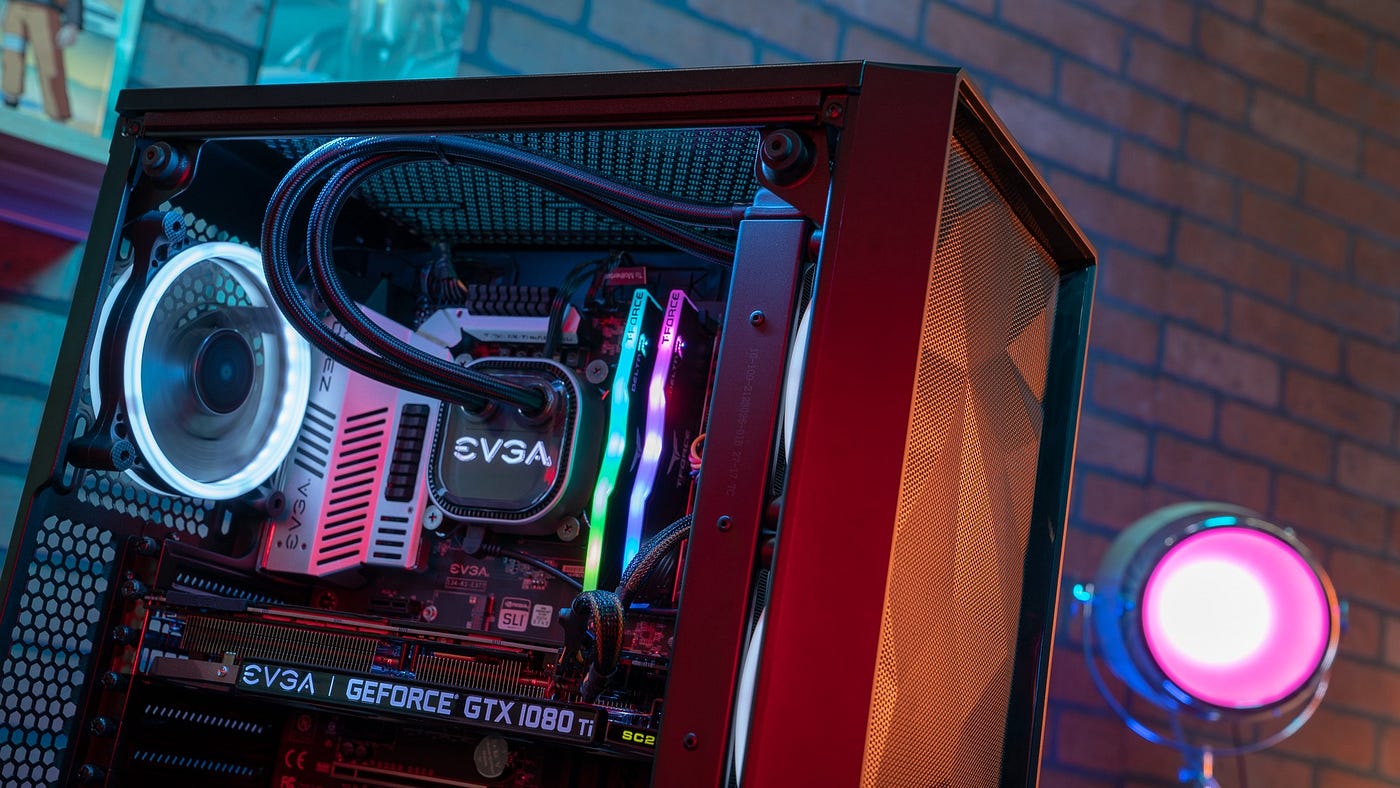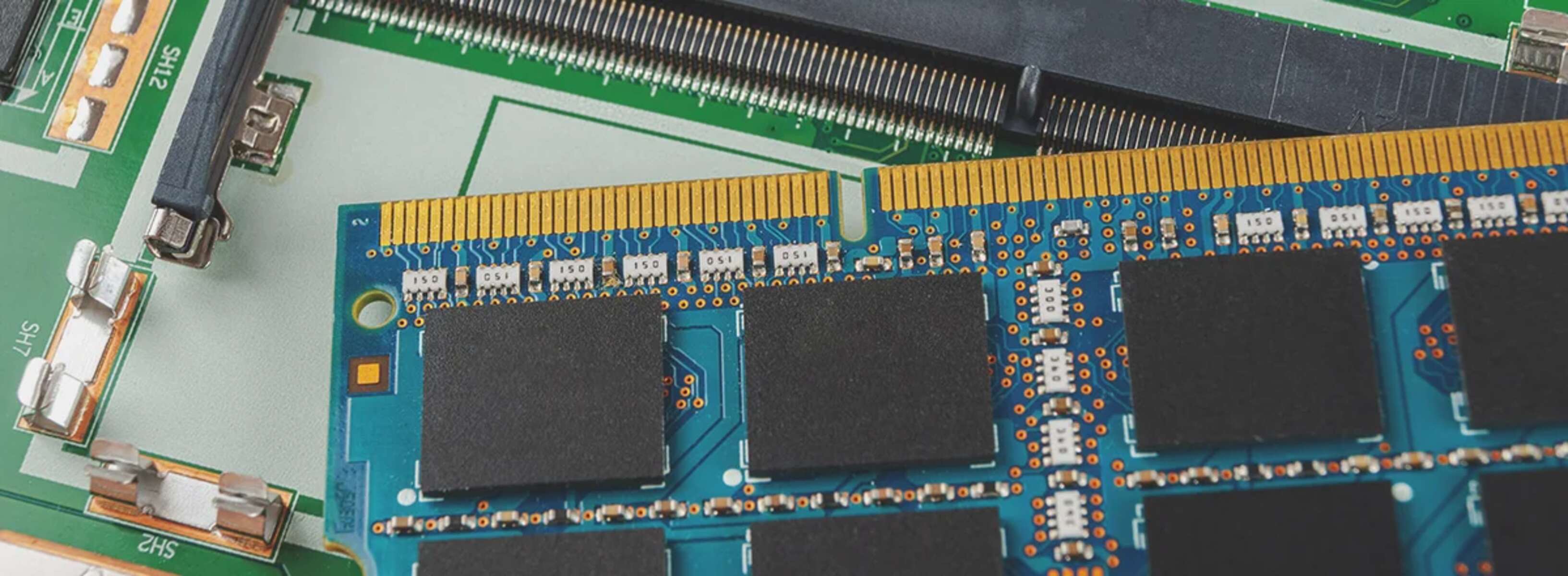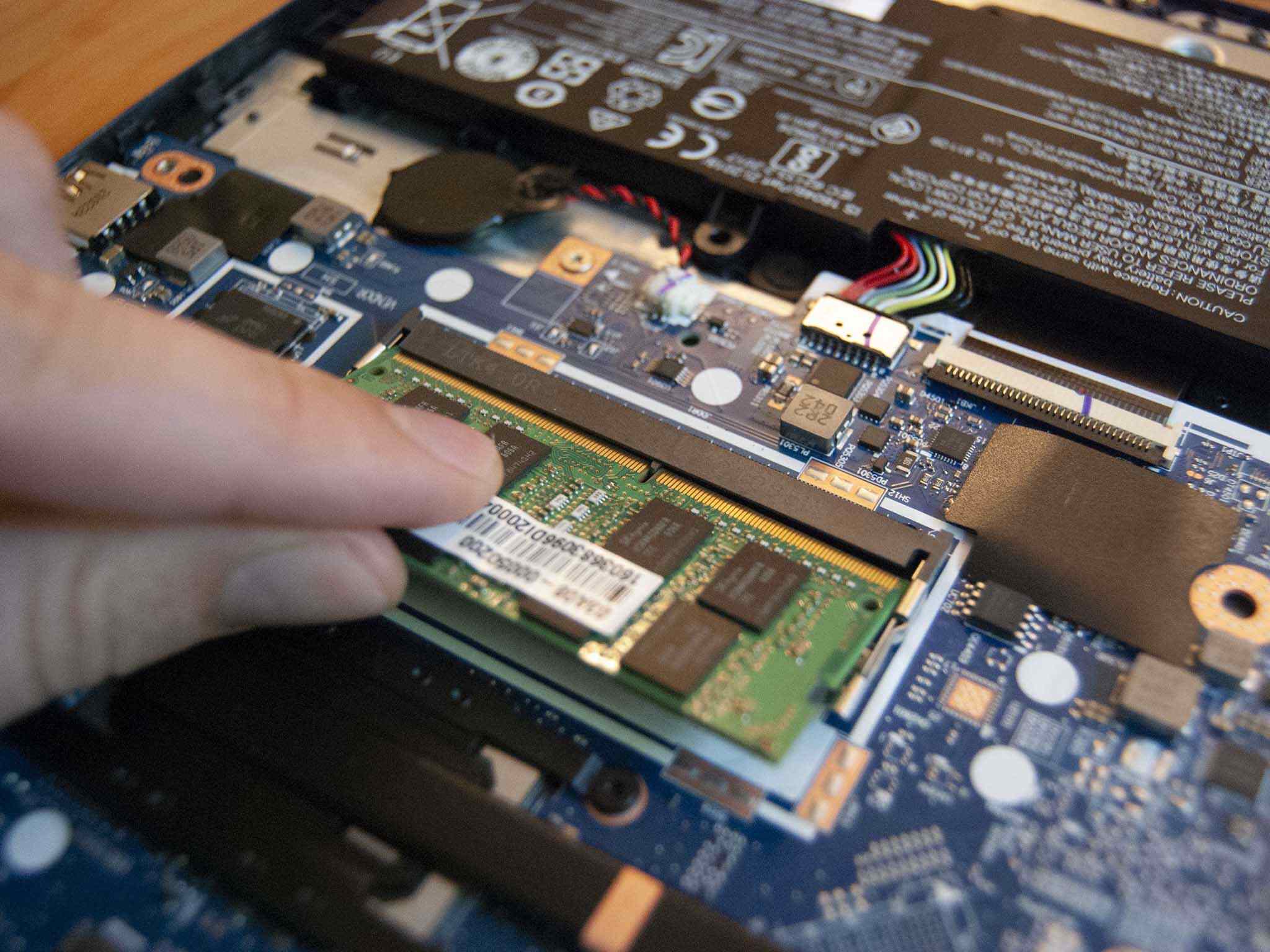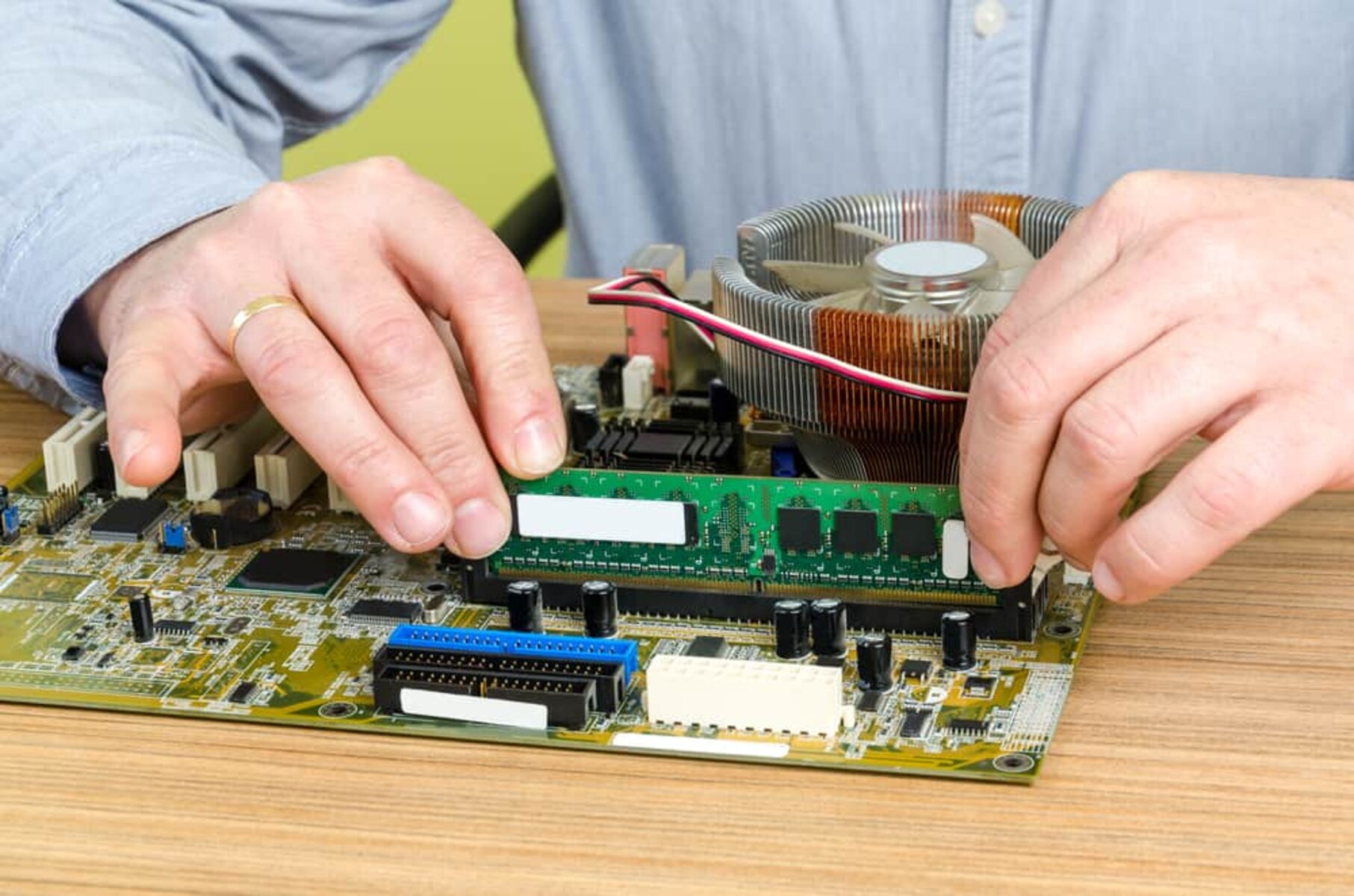Introduction
When it comes to optimizing your computer’s performance, one of the important factors to consider is the amount of RAM (Random Access Memory) installed. RAM plays a crucial role in how your computer handles tasks, allowing for smooth multitasking and faster data access.
If you’ve noticed that your computer is running slower than usual or struggling to run certain programs, it may be time to upgrade your RAM. But how much RAM can you actually put on your computer? In this article, we will explore the various factors that determine the maximum RAM capacity and provide you with the necessary information to make an informed decision.
Before diving into the specifics, it is important to note that the maximum amount of RAM you can install on your computer is determined by several factors, including the operating system, computer brand, motherboard type, and processor type. Understanding these limitations will help you determine the optimal amount of RAM that your system can handle.
Upgrading your RAM can have a significant impact on your computer’s speed and performance, allowing you to run more demanding applications, handle larger files, and improve overall productivity. Whether you are a gamer, a designer, or simply a casual user, having enough RAM is essential for a satisfying computing experience.
In the following sections, we will explore the factors that you should consider before upgrading your RAM, how to check your current RAM configuration, and how to determine the maximum RAM capacity your computer can support. We will also provide you with valuable tips for choosing the right RAM for your computer and guide you through the steps to successfully upgrade your RAM.
So, if you’re ready to supercharge your computer’s performance, let’s dive into the world of RAM upgrades and find out how much RAM you can put on your computer.
Factors to Consider Before Upgrading RAM
Before proceeding with a RAM upgrade, it is important to consider a few key factors to ensure a successful installation and compatibility with your system. Let’s take a closer look at these factors:
- Operating System Requirements: Different operating systems have varying requirements for RAM. For example, Windows 10 recommends at least 4GB of RAM for 64-bit systems, while macOS Catalina requires a minimum of 4GB of RAM. It’s important to check the specifications of your operating system to determine the minimum and recommended RAM requirements.
- System Requirements of Applications: Consider the types of applications you frequently use. If you work with resource-intensive software such as video editing programs or virtual machines, you will likely benefit from having a larger amount of RAM. Check the system requirements of these applications to determine the recommended RAM capacity.
- User Requirements: Evaluate your personal computing needs. If you tend to have multiple applications running simultaneously or frequently work with large files, a higher amount of RAM will provide smoother multitasking and better performance.
- Motherboard Compatibility: Ensure that your motherboard supports the desired RAM module capacity and type. Check the motherboard’s manual or visit the manufacturer’s website to find information on the maximum RAM capacity and supported RAM speeds. If you are unsure, you can use system information tools to gather information about your motherboard and its compatibility.
- Processor Limitations: Some processors have limitations on the amount of RAM they can support. It’s essential to check the specifications of your processor to determine the maximum RAM capacity. Keep in mind that older processors might have lower limits compared to newer ones.
- Physical Space: Consider the physical space available in your computer case for additional RAM modules. Ensure that there is enough clearance and slots available to accommodate the desired RAM configuration.
- Budget: Lastly, consider your budget for the RAM upgrade. RAM prices can vary based on capacity and speed. It’s essential to balance your requirements and budget to make an informed decision.
By taking these factors into account, you can determine the appropriate amount of RAM to upgrade and ensure compatibility with your system. With careful consideration, you can maximize the performance of your computer and enhance your computing experience.
How to Check Your Current RAM Configuration
Before proceeding with a RAM upgrade, it’s important to know your current RAM configuration. This will help you determine how much RAM is currently installed, the number of available slots, and the maximum RAM capacity your system can support. Here are the steps to check your current RAM configuration:
- Windows: On a Windows computer, you can check your RAM configuration using the built-in Task Manager. Simply press Ctrl + Shift + Esc to open the Task Manager, then click on the “Performance” tab. Under the “Memory” section, you will find information about your total installed RAM, available RAM, and memory usage.
- Mac: On a Mac computer, you can check your RAM configuration by clicking on the Apple menu in the top-left corner of your screen and selecting “About This Mac”. In the pop-up window, click on the “Memory” tab to view your total installed RAM and other relevant information.
- Linux: If you’re using a Linux distribution, you can open a terminal window and use the command “free -h” (without quotes) to display information about your RAM configuration, including the total, used, and available memory.
- Bios/UEFI: Another way to check your RAM configuration is through your computer’s BIOS or UEFI settings. Restart your computer and enter the BIOS or UEFI by pressing a specific key (usually Delete, F2, or F10) during startup. Once in the BIOS or UEFI settings, navigate to the system information or memory section to find details about your installed RAM modules, slots, and capacity.
Additionally, you can install third-party system information tools such as CPU-Z or Speccy, which provide comprehensive details about your computer’s hardware, including RAM configuration.
By following these steps, you will be able to gather the necessary information about your current RAM configuration. This knowledge will assist you in determining the right RAM upgrade for your computer and ensure compatibility with your system’s specifications.
Understanding RAM Limitations for Different Operating Systems
Each operating system has its own limitations when it comes to the maximum amount of RAM it can utilize. It’s important to understand these limitations to ensure that you don’t exceed the supported RAM capacity and experience compatibility issues. Let’s explore the RAM limitations for different operating systems:
- Windows: The RAM limitations for Windows operating systems vary depending on the edition. For example, the 32-bit versions of Windows 10 can support a maximum of 4GB of RAM, while the 64-bit versions can utilize much higher capacities, with Windows 10 Home supporting up to 128GB and Windows 10 Pro and Enterprise supporting up to 2TB.
- macOS: The RAM limitations for macOS differ based on the version. For macOS Catalina and later, the RAM limit is 128GB, while previous versions have varying limitations. It’s important to check the specifications of your macOS version to determine the supported RAM capacity.
- Linux: Linux distributions, being highly customizable, generally have higher RAM limits compared to other operating systems. The limitations can depend on the specific distribution and kernel version. In most cases, 64-bit Linux distributions can support up to 128TB (terabytes) of RAM.
- Unix: The RAM limitations for Unix-based systems can vary depending on the specific version and implementation. Generally, Unix-based systems can support higher RAM capacities, ranging from 1TB to several petabytes, depending on the hardware and kernel configuration.
It’s important to note that the RAM limitations mentioned above are theoretical maximums. In practical scenarios, other factors such as hardware limitations and motherboard support can impact the actual achievable RAM capacity.
Before upgrading your RAM, ensure that you are running a 64-bit version of the operating system to fully utilize higher RAM capacities. If you are using a 32-bit operating system, you may want to consider upgrading to a 64-bit version to take advantage of the increased RAM support.
By understanding the RAM limitations for different operating systems, you can make an informed decision when upgrading your RAM and ensure compatibility with your chosen operating system.
Understanding RAM Limitations for Different Computer Brands
When it comes to RAM limitations, different computer brands may have varying specifications and restrictions. It’s important to consider these limitations to ensure compatibility when upgrading the RAM in your computer. Let’s take a closer look at the RAM limitations for different computer brands:
- Apple: Apple computers, such as MacBooks and iMacs, generally have specific RAM limitations determined by the model and year of release. For example, certain MacBook models may have a maximum supported RAM capacity of 8GB, while high-end iMac models can support up to 128GB. It’s crucial to check the specifications and compatibility of your specific Apple computer model before upgrading the RAM.
- HP: HP is a popular computer brand that offers a wide range of desktops and laptops. The RAM limitations for HP computers can vary depending on the specific model and hardware configuration. It’s important to consult the manufacturer’s documentation or support resources to determine the maximum supported RAM capacity for your HP computer.
- Dell: Dell computers, including Dell laptops and desktops, also have varying RAM limitations depending on the model. Some Dell models may have a maximum RAM capacity of 16GB, while others can support up to 128GB or more. Check the specifications of your Dell computer or contact Dell support to determine the maximum RAM capacity and compatibility for your specific model.
- Lenovo: Lenovo is known for its reliable and versatile lineup of computers. RAM limitations for Lenovo laptops and desktops can differ based on the specific model and series. It’s essential to refer to the documentation or support resources provided by Lenovo to determine the maximum RAM capacity supported by your Lenovo computer.
- Acer: Acer is another popular computer brand that offers a range of desktops, laptops, and Chromebooks. The RAM limitations for Acer computers can vary depending on the model and hardware specifications. Refer to the specifications or contact Acer support to find out the maximum supported RAM capacity for your specific Acer computer.
- Custom-built Computers: If you have a custom-built computer, the RAM limitations will depend on the motherboard and processor you have selected. Consult the documentation of your motherboard and processor to determine the maximum RAM capacity and any other restrictions.
It is important to remember that these RAM limitations are determined by the manufacturer’s specifications and physical limitations of the computer models. Exceeding the maximum supported RAM capacity may result in compatibility issues or system instability. Therefore, always ensure that the RAM you choose is within the supported limitations for your specific computer brand and model.
By understanding the RAM limitations for different computer brands, you can select the appropriate RAM upgrade that is compatible with your computer and optimize its performance accordingly.
Understanding RAM Limitations for Different Motherboard Types
When upgrading your RAM, it’s crucial to consider the limitations imposed by your motherboard. The motherboard determines the type and amount of RAM that can be installed in your computer. Understanding the RAM limitations for different motherboard types is essential to ensure compatibility and a successful upgrade. Let’s explore some common motherboard types and their RAM limitations:
- ATX Motherboards: ATX (Advanced Technology eXtended) motherboards are one of the most widely used motherboard types. They typically offer a range of RAM slots and support various RAM capacities, from low to high. The RAM limitations for ATX motherboards can vary but commonly support up to 128GB or more, depending on the specific model and the chipset it uses.
- mATX (Micro ATX) Motherboards: mATX motherboards are smaller than standard ATX boards and are often used in compact desktops or budget-friendly builds. Due to their smaller size, mATX motherboards usually provide fewer RAM slots and may have lower RAM limitations compared to ATX motherboards. Typically, mATX motherboards can support up to 64GB of RAM, but some models may offer higher capacities.
- Mini-ITX Motherboards: Mini-ITX motherboards are the smallest form factor motherboards available. They are commonly used in small form factor PCs or compact builds. Due to their compact size, Mini-ITX boards generally have only two RAM slots and lower RAM limitations. They can typically support up to 32GB or 64GB of RAM, depending on the specific model.
- Server Motherboards: Server motherboards are designed for handling heavy workloads and support multiple processors. These motherboards often come with multiple RAM slots and robust memory capabilities. Server motherboards can support significantly higher RAM capacities, ranging from 256GB to several terabytes, depending on the model and server requirements.
- Laptop Motherboards: Laptop motherboards have their own limitations due to their compact design and limited upgrade options. Laptop motherboards generally have fewer RAM slots and may support lower RAM capacities compared to desktop motherboards. The RAM limitations for laptop motherboards can vary widely depending on the specific model and manufacturer.
It is important to check the specifications and documentation of your motherboard to determine the exact RAM limitations. Refer to the manufacturer’s website or consult the motherboard manual for accurate and up-to-date information on supported RAM capacities and compatibility.
By understanding the RAM limitations for different motherboard types, you can ensure that the RAM upgrade you choose is compatible with your motherboard and optimize the performance of your computer accordingly.
Understanding RAM Limitations for Different Processor Types
When upgrading your RAM, it’s important to consider the limitations imposed by your processor. The processor, also known as the central processing unit (CPU), plays a crucial role in determining the maximum amount of RAM that your system can support. Understanding the RAM limitations for different processor types is essential to ensure compatibility and optimal performance. Let’s explore the RAM limitations for different processor types:
- Intel Processors: Intel offers a wide range of processors for both desktop and laptop computers. The RAM limitations for Intel processors can vary depending on the specific model and generation. Older Intel processors, such as those from the Core 2 Duo series, may have limitations that range from 8GB to 16GB of RAM. However, newer Intel processor models, such as the 10th or 11th generation Core series, can support much higher RAM capacities, ranging from 64GB to 128GB or more.
- AMD Processors: AMD processors, known for their competitive performance and value, also have varying RAM limitations based on the specific model and generation. Older AMD processors, like those from the FX series, may have RAM limitations ranging from 16GB to 32GB. However, newer AMD processors, such as those from the Ryzen series, can support higher RAM capacities, with models like Ryzen 9 supporting up to 256GB of RAM.
- Mobile and Low-Power Processors: Mobile processors, commonly found in laptops, tablets, and mobile devices, often have lower RAM limitations due to power and thermal constraints. These processors typically support lower RAM capacities, ranging from 4GB to 32GB, depending on the specific model and architecture. It’s essential to check the specifications of your mobile processor to determine the maximum supported RAM capacity.
- Server-grade Processors: Server-grade processors, designed for handling heavy workloads and server applications, generally support higher RAM capacities to accommodate the needs of enterprise environments. These processors can support significantly higher RAM capacities, ranging from 256GB to several terabytes, depending on the specific model, architecture, and server requirements.
It’s important to note that the RAM limitations mentioned above are the maximum supported capacities specified by the processor manufacturers. However, other factors such as the motherboard capabilities and operating system limitations may also affect the actual achievable RAM capacity. Ensure that your motherboard and operating system can support the desired RAM capacity in addition to the requirements of the processor.
By understanding the RAM limitations for different processor types, you can select the appropriate RAM upgrade that ensures compatibility with your processor and enhances the performance of your system.
How to Determine the Maximum RAM Capacity of Your Computer
To determine the maximum RAM capacity of your computer, you can follow these steps:
- Check the Specifications: The simplest way to determine the maximum RAM capacity is to check the specifications provided by the manufacturer. Look for the documentation or the official website of your computer brand and model. Most manufacturers provide detailed specifications that include the maximum supported RAM capacity.
- Refer to the Motherboard Manual: If you have a custom-built computer, you can refer to the motherboard manual. The manual typically includes information about the motherboard’s RAM slots, compatible RAM types, and the maximum RAM capacity the motherboard can support. Look for the specifications related to memory or RAM in the manual.
- Use System Information Tools: You can use system information tools to gather information about your computer’s hardware and the maximum RAM capacity. CPU-Z and Speccy are popular system information tools that provide detailed information about your computer’s components, including the maximum supported RAM capacity. Install one of these tools and look for the RAM or memory section to find the maximum supported capacity.
- Consult Online Resources: Online forums and communities dedicated to computer hardware can be valuable resources for determining the maximum RAM capacity of your computer. Search for your computer model or motherboard model on forums or technology help websites. There may be discussions or posts about the maximum RAM supported by your specific hardware configuration.
It’s important to note that the maximum RAM capacity is not solely determined by the computer brand or the motherboard. Other factors, such as the operating system and the processor, may impose their own limitations as well. Consider checking the supported RAM capacities for these components as well to ensure compatibility and overall system performance.
By following these steps and gathering the necessary information, you can determine the maximum RAM capacity of your computer. It is essential to stay within the supported limitations to ensure a successful RAM upgrade and avoid compatibility issues.
Steps to Upgrade Your RAM
Upgrading your RAM can be a relatively straightforward process if you follow the necessary steps. Here is a guide to help you upgrade your RAM:
- Gather the Required Information: Determine the type and maximum capacity of RAM that your computer supports. Consider factors such as the motherboard’s RAM configuration and any limitations imposed by the operating system and processor.
- Prepare for Installation: Shut down your computer and disconnect any power source. Ensure that you are working in a clean and static-free environment. Also, take necessary precautions such as wearing an anti-static wrist strap to prevent any damage to the RAM or other components.
- Locate the RAM Slots: Open your computer case and locate the RAM slots. Typically, these slots are long and vertical, usually near the CPU socket on the motherboard. Refer to the motherboard manual if you have difficulty finding them.
- Remove Existing RAM (if necessary): If you are replacing existing RAM modules, gently press down on the retention clips on each side of the RAM module until it pops out of the slot. Carefully remove the RAM module from the slot, holding it by the edges.
- Insert New RAM Modules: Align the notch on the new RAM module with the notch in the RAM slot. Firmly press down on the module until the retention clips on each side click into place. Ensure that the RAM module is securely seated in the slot.
- Repeat for Additional Modules (if applicable): If you are adding multiple RAM modules, repeat the process for each module, making sure they are correctly inserted into their respective slots. It’s important to refer to the motherboard’s documentation to understand the recommended configuration for installing multiple modules.
- Close the Computer Case: Once all the new RAM modules are securely inserted, close the computer case and reattach any removed panels. Ensure that all connections are properly plugged back in.
- Power On and Verify: Connect the power source and turn on your computer. As it boots up, observe the system information or use system information tools to confirm that the new RAM has been detected and is functioning correctly.
- Test for Stability: After upgrading the RAM, it is recommended to test your system’s stability and performance. Run various applications or tasks that previously strained your system to observe the improvements brought by the RAM upgrade. If everything operates smoothly without any crashes or performance issues, your RAM upgrade was successful.
Keep in mind that these steps are general guidelines, and the specific process may vary depending on your computer brand, model, and motherboard design. It’s crucial to consult your computer’s documentation or manufacturer’s support resources for detailed instructions specific to your system.
By following these steps, you can successfully upgrade your RAM and enjoy improved performance and multitasking capabilities on your computer.
Tips for Choosing the Right RAM for Your Computer
Choosing the right RAM for your computer is essential to ensure compatibility and optimal performance. Here are some tips to help you select the right RAM for your computer:
- Check Compatibility: Ensure that the RAM you choose is compatible with your motherboard, operating system, and processor. Consider factors such as the type (DDR3, DDR4, etc.), speed, and capacity that your system supports. Refer to the motherboard manual or manufacturer’s website to find detailed specifications.
- Consider Your Needs: Assess your computing needs and determine the amount of RAM required. For basic tasks like web browsing and word processing, 4GB to 8GB of RAM may be sufficient. However, if you engage in resource-intensive tasks like gaming, video editing, or running virtual machines, consider higher capacities such as 16GB, 32GB, or even more.
- Choose Reliable Brands: Opt for RAM modules from reputable and reliable brands. Look for brands known for their quality, performance, and reliability. Good brands include Kingston, Corsair, Crucial, G.Skill, and Samsung, among others. These brands often provide warranties and technical support, ensuring peace of mind and assistance in case of any issues.
- Consider RAM Speed: RAM speed, measured in megahertz (MHz), affects the data transfer rate between the RAM and the CPU. Higher RAM speeds can result in improved performance, especially in tasks that require frequent data access. However, note that the actual impact on overall system performance may be marginal, and it’s crucial to ensure compatibility with your motherboard and processor.
- Budget Considerations: Set a budget for your RAM upgrade. RAM prices can vary depending on factors such as capacity and speed. Determine the maximum amount you are willing to spend and balance it with your requirements. Consider getting the best RAM within your budget to ensure long-term usability and performance.
- Consider Future Upgradability: If you have plans to further upgrade your system in the future, consider leaving additional RAM slots available for future expansion. This way, you can easily add more RAM modules without needing to replace existing ones, saving costs and effort.
- Shop from Trusted Sources: Purchase RAM modules from trusted sources, such as authorized retailers or reputable online stores. Be cautious of counterfeit or unreliable sellers, as low-quality RAM modules can lead to compatibility issues, reduced performance, and potential system instability.
- Read Reviews and Recommendations: Before making a final decision, read reviews from trusted technology websites and forums. Look for user experiences, performance tests, and compatibility feedback. This information can provide valuable insights to help you make an informed decision.
By considering these tips, you can choose the right RAM for your computer that meets your requirements, ensures compatibility, and improves overall system performance. If you are unsure about any aspect of the RAM selection process, seek guidance from experts or consult the support resources provided by the motherboard or computer manufacturer.
Conclusion
Upgrading your RAM can be a highly effective way to enhance your computer’s performance, allowing for smoother multitasking, faster data access, and improved overall system responsiveness. By understanding the various factors and limitations involved in upgrading your RAM, you can make informed decisions and ensure a successful upgrade that is compatible with your computer system.
Before upgrading your RAM, consider factors such as your operating system’s requirements, the demands of your applications, your personal computing needs, and the limitations imposed by your computer brand, motherboard, and processor. By taking these factors into account, you can determine the optimal RAM capacity to meet your specific requirements and maximize your computer’s performance.
Remember to gather the necessary information about your current RAM configuration, consult the specifications and documentation provided by your computer manufacturer or motherboard, and use system information tools to determine the maximum RAM capacity your system supports. Following the correct steps to upgrade your RAM, such as handling the modules with care, correctly inserting them into the slots, and testing for stability, will ensure a successful installation.
When choosing the right RAM for your computer, consider compatibility, your computing needs, reliability of brands, RAM speed, budget considerations, and future upgradability. Take advantage of user reviews and recommendations from trusted sources to make an informed decision.
Ultimately, upgrading your RAM can provide a significant boost to your computer’s performance, allowing you to handle more demanding tasks, increase productivity, and improve your overall computing experience. With careful consideration of the various factors discussed in this article, you can confidently select and install the right RAM for your computer, unleashing its full potential.

























